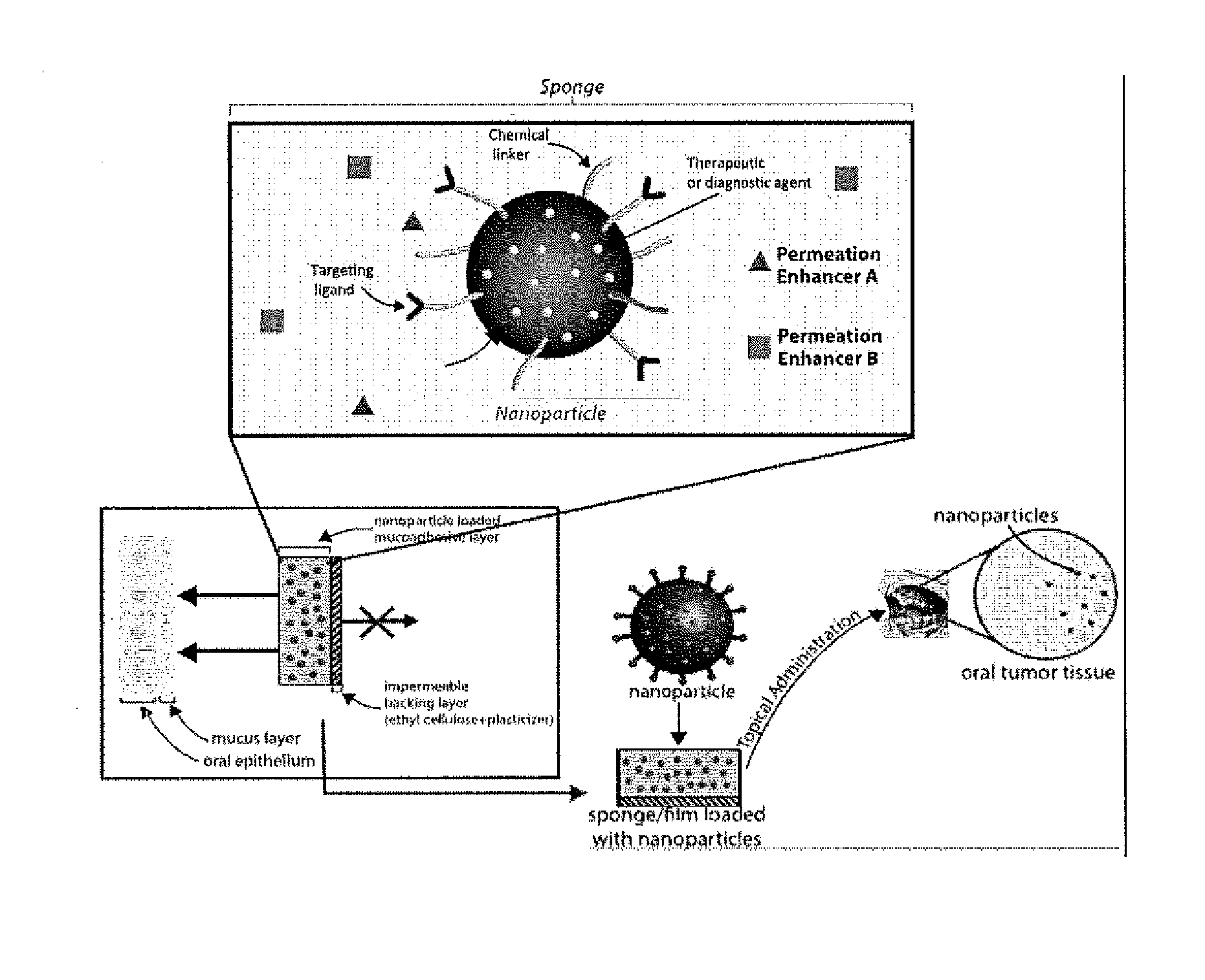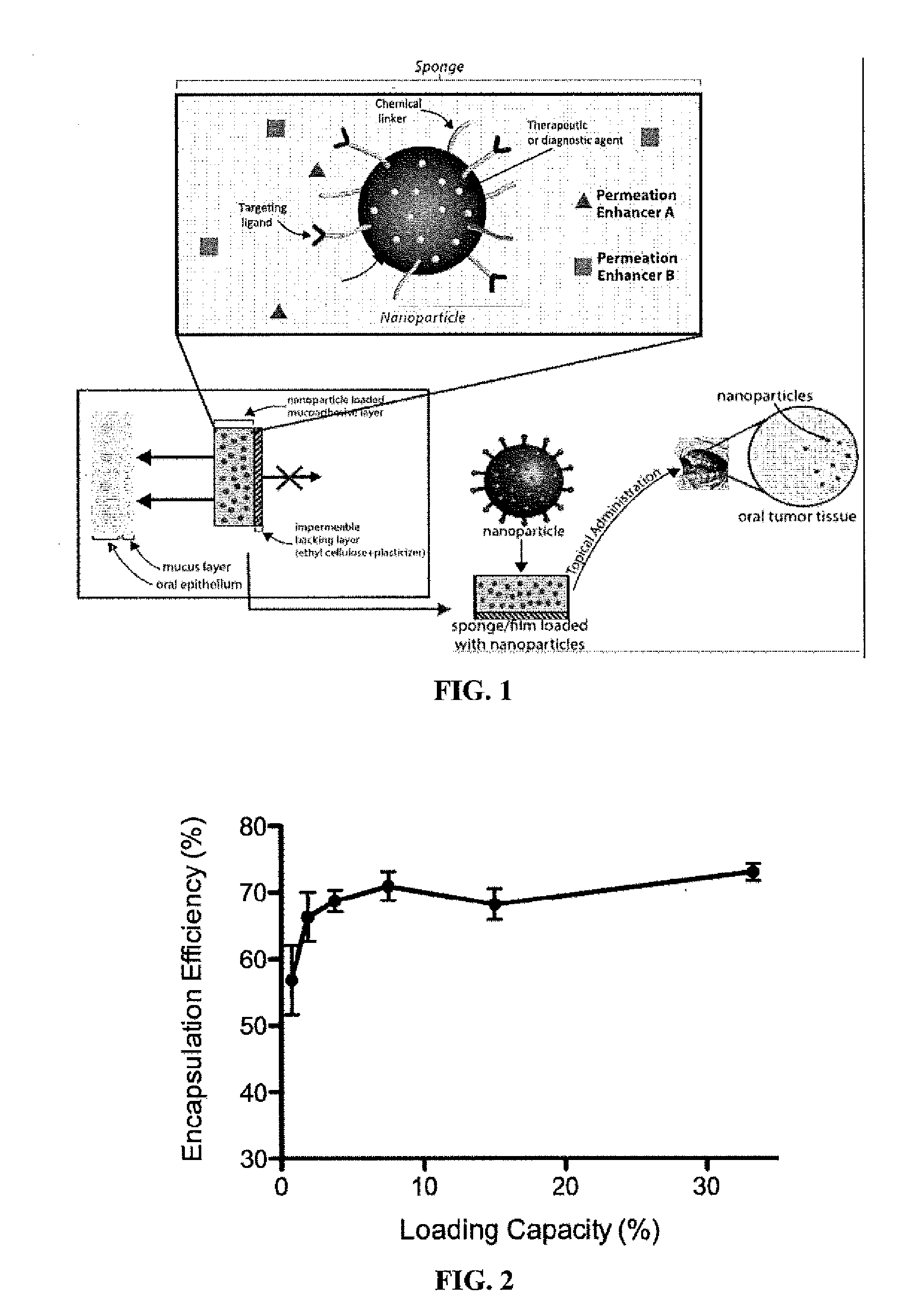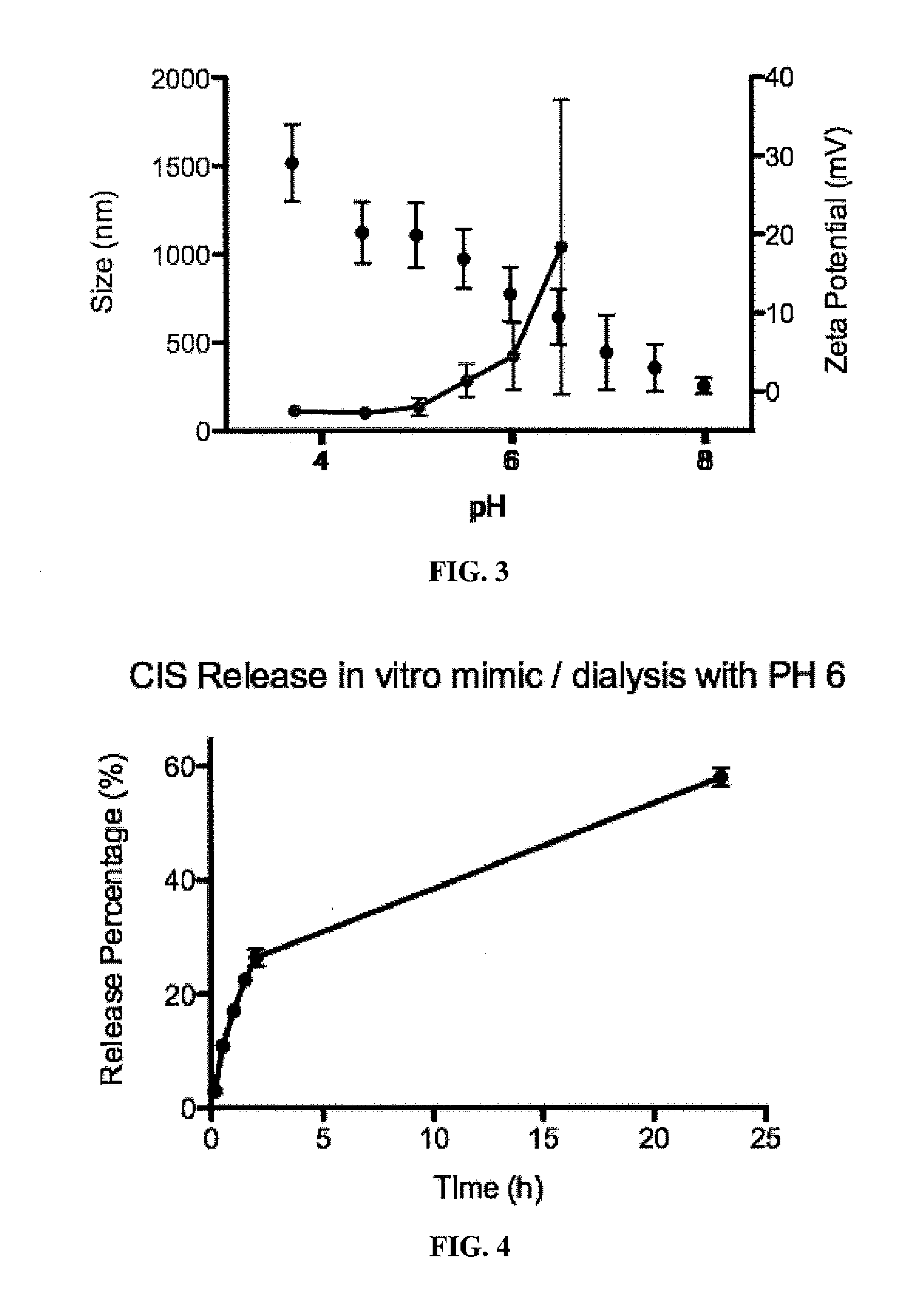Targeted Buccal Delivery of Agents
a technology agents, applied in the field of targeted buccal delivery forms, can solve the problems of difficult local delivery of a therapeutic to the mouth, no safe, effective and convenient treatment for patients, and difficult delivery to the oral tissue, so as to prevent bitterness and unpleasant tas
- Summary
- Abstract
- Description
- Claims
- Application Information
AI Technical Summary
Benefits of technology
Problems solved by technology
Method used
Image
Examples
example 1
Preparation of Drug-Free Chitosan-Based Nanoparticles
[0088]Nanoparticles were prepared using low molecular weight research grade chitosan as described below.
[0089]Materials and Methods
[0090]Briefly, 5 mL of tripolyphosphates (TPP) solution in purified water at various w / v (0.1%-1%) was added to a 10 mL acetic acid solution (0.175% v / v) containing various concentrations of low molecular weight, medium weight, and deacetylated chitosan (0.1%-1% w / v), while stirring vigorously. The mixture was continuously stirred under room temperature for 10 min, yielding a collection of chitosan-nanoparticles (CHI-NP) with various sizes.
[0091]Nanoparticles were characterized. Size, polydispersity index (PDI), Kilocount per second (KCPS) and zeta potential (ZP) of nanoparticles were measured by Zetasizer Nano (Malvern Instruments, Ltd., UK).
[0092]Results
[0093]Table 1 summarizes the properties of the nanoparticles prepared from low molecular weight chitosan. By far the most important physical property...
example 2
Preparation and Characterization of Cisplatin-Encapsulated Nanoparticles
[0099]Materials and Methods
[0100]Cisplatin-loaded nanoparticles were prepared using low molecular weight research chitosan, using different concentrations of cisplatin as described below.
[0101]Briefly, 5 mL of tripolyphosphates (TPP) solution at 0.1% w / v containing cisplatin (0.1-2 mg) was added to a 10 mL acetic acid solution (0.175% v / v) containing 0.1% w / v chitosan, while stirring vigorously. The mixture was stirred continuously at room temperature for 10 min, yielding a collection of cisplatin-encapsulated CHI-NP with different cisplatin loading amounts.
[0102]The optimal formulation for blank nanoparticles is 5 mL of tripolyphosphates (TPP) solution in purified water at 0.1% w / v was added to a 10 mL acetic acid solution (0.175% v / v) containing 0.1% w / v chitosan, while stirring vigorously. The mixture was continuously stirred at room temperature for 10 min, yielding a chitosan-nanoparticle (CHI-NP) solution c...
example 3
Effect of pH on Cisplatin-Encapsulated Chitosan Nanoparticles Properties
[0114]Materials and Methods
[0115]The effect of pH on the size and zeta potential of the above mentioned 33.3% cisplatin-loaded chitosan nanoparticles was studied using a Zetasizer (Nano ZS, Malvern Instruments, UK). The aqueous dispersion of nanoparticles (12 ml) was titrated with 0.1 M sodium hydroxide solution (NaOH) under constant stirring over a range of pH (3.7-8). The titrated dispersion was transferred to a measuring capillary cell for the Zetasizer measurements. The changes in the properties (both size and charge) of the nanoparticles were measured as a function of pH.
[0116]Materials and Methods
[0117]The change in zeta potential of nanoparticles over a pH range 3.7-8.0 is shown in FIG. 3 (in black). The high positive surface charge density for crosslinked chitosan at lower pH is due to the free surface amine groups of chitosan. As the pH of the nanoparticle suspension was increased, a greater proportion ...
PUM
| Property | Measurement | Unit |
|---|---|---|
| diameter | aaaaa | aaaaa |
| diameter | aaaaa | aaaaa |
| molecular weight | aaaaa | aaaaa |
Abstract
Description
Claims
Application Information
 Login to View More
Login to View More - R&D
- Intellectual Property
- Life Sciences
- Materials
- Tech Scout
- Unparalleled Data Quality
- Higher Quality Content
- 60% Fewer Hallucinations
Browse by: Latest US Patents, China's latest patents, Technical Efficacy Thesaurus, Application Domain, Technology Topic, Popular Technical Reports.
© 2025 PatSnap. All rights reserved.Legal|Privacy policy|Modern Slavery Act Transparency Statement|Sitemap|About US| Contact US: help@patsnap.com



